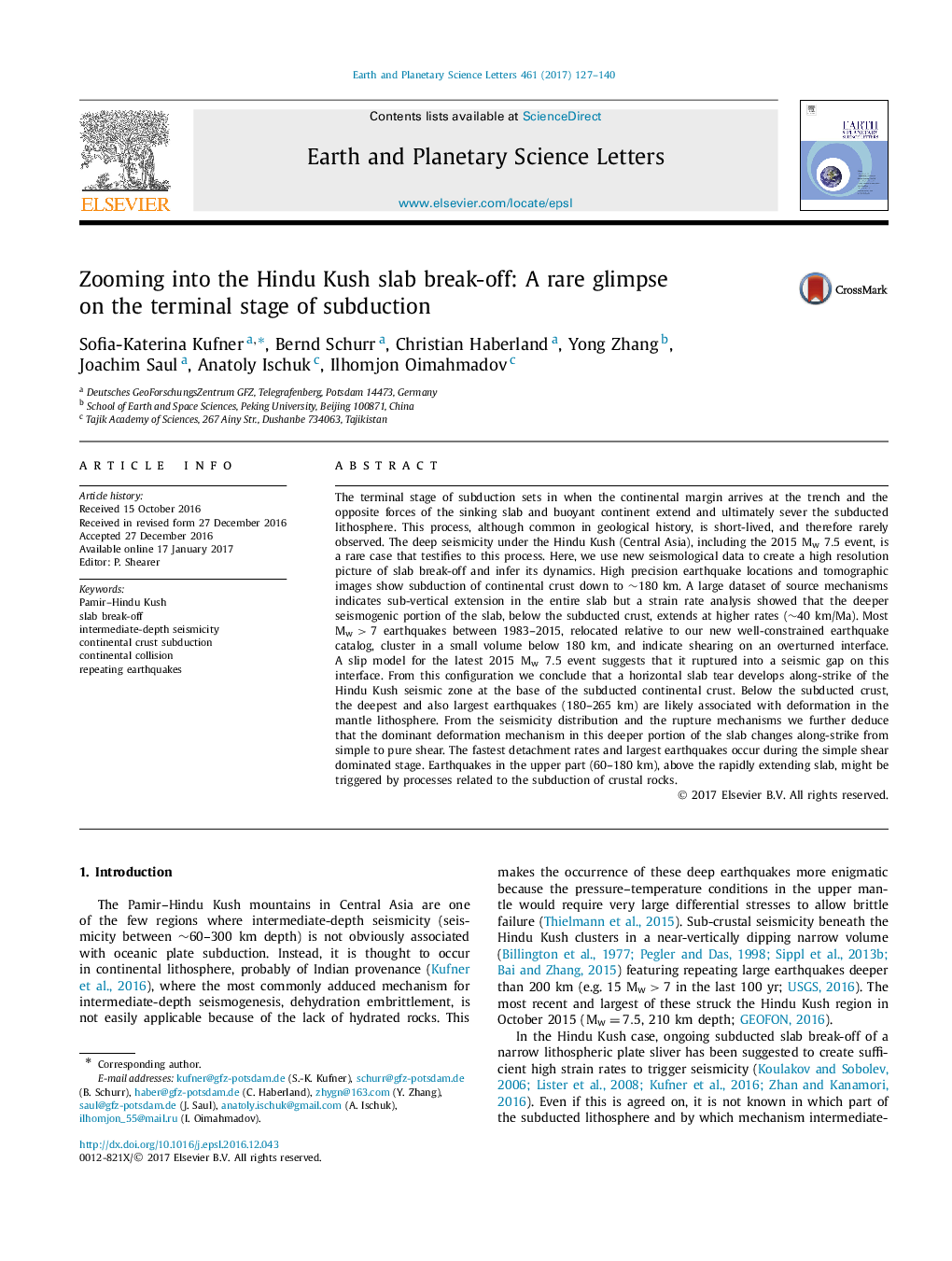| کد مقاله | کد نشریه | سال انتشار | مقاله انگلیسی | نسخه تمام متن |
|---|---|---|---|---|
| 5779804 | 1634695 | 2017 | 14 صفحه PDF | دانلود رایگان |
- Subduction of continental crust beneath Hindu Kush to â¼180 km depth.
- Highest seismic strain rates and largest earthquakes deeper than 180 km.
- Break-off develops along-strike of seismic zone at base of subducted continental crust.
- Intermediate-depth seismicity in the upper part (60-180 km) in crustal rocks.
- Seismicity in the deeper part (180-265 km) due to deformation in mantle lithosphere.
The terminal stage of subduction sets in when the continental margin arrives at the trench and the opposite forces of the sinking slab and buoyant continent extend and ultimately sever the subducted lithosphere. This process, although common in geological history, is short-lived, and therefore rarely observed. The deep seismicity under the Hindu Kush (Central Asia), including the 2015 Mw7.5 event, is a rare case that testifies to this process. Here, we use new seismological data to create a high resolution picture of slab break-off and infer its dynamics. High precision earthquake locations and tomographic images show subduction of continental crust down to â¼180 km. A large dataset of source mechanisms indicates sub-vertical extension in the entire slab but a strain rate analysis showed that the deeper seismogenic portion of the slab, below the subducted crust, extends at higher rates (â¼40 km/Ma). Most Mw>7 earthquakes between 1983-2015, relocated relative to our new well-constrained earthquake catalog, cluster in a small volume below 180 km, and indicate shearing on an overturned interface. A slip model for the latest 2015 Mw7.5 event suggests that it ruptured into a seismic gap on this interface. From this configuration we conclude that a horizontal slab tear develops along-strike of the Hindu Kush seismic zone at the base of the subducted continental crust. Below the subducted crust, the deepest and also largest earthquakes (180-265 km) are likely associated with deformation in the mantle lithosphere. From the seismicity distribution and the rupture mechanisms we further deduce that the dominant deformation mechanism in this deeper portion of the slab changes along-strike from simple to pure shear. The fastest detachment rates and largest earthquakes occur during the simple shear dominated stage. Earthquakes in the upper part (60-180 km), above the rapidly extending slab, might be triggered by processes related to the subduction of crustal rocks.
Journal: Earth and Planetary Science Letters - Volume 461, 1 March 2017, Pages 127-140
